Breast Augmentation
Breast augmentation with implants can help to enhance or restore the bustline and create more pleasing proportions. Today’s technologies and methodologies make breast augmentation an incredibly safe procedure that leaves minimal scarring. Dr. Kobienia has many years of experience performing breast implant surgery and has helped hundreds of women achieve the look they want.
Ideal candidates for a breast augmentation procedure are women who are at least 18 years old, in good health, and not pregnant or nursing. Even more importantly, good candidates are women who understand the benefits and risks of breast augmentation, recognize the limits of the surgery, and set realistic expectations about what the procedure can achieve.
Please contact us online or call 612-930-1111 to schedule a FREE cosmetic consultation to discuss your options. Dr. Kobienia in Minneapolis, MN, can help you achieve your best look through breast augmentation surgery.
Silicone vs. Saline Breast Implants
One of the most common questions asked by patients who are considering breast augmentation at our Minneapolis-area practice is the difference between saline and silicone breast implants. The best way to decide which implant type is right for you is to talk with Dr. Kobienia during a one-on-one consultation, where he can show you the different implant styles and discuss your goals.
Silicone breast implants consist of a silicone rubber shell that is filled with silicone gel. Unlike saline breast implants, which are inflated with a saltwater solution after they have been implanted, silicone implants are not inflatable and are the same size before and after they are placed. One of the greatest benefits of silicone breast implants is their more natural visual and physical aesthetic. The distinct consistency of the silicone gel is far similar to breast tissue than saline, allowing the augmented breasts to both look and feel more natural.
Saline breast implants are, in essence, silicone rubber shells filled with a sterile salt water solution. The size of saline breast implants can be customized, as they are typically filled after they have been placed under the breast tissue. The fact that saline breast implants are filled after they are placed give them the distinct advantage of requiring very minimal incisions, as only the empty implant shell needs to be inserted during the procedure. Another benefit of saline implants is that should the implant leak or rupture, the saline solution can be readily absorbed by the human body.
A decade or more ago, saline and silicone implants had roughly equal popularity. But since the introduction of silicone gel implants, the majority of women have been selecting this implant style over saline. This is primarily due to the very natural look and feel that can be achieved with this implant type. But saline implants remain available and can be a good option for some women. It’s all about understanding the pluses and minuses of each implant type so you can make an informed decision.
Breast Augmentation Patient Photos
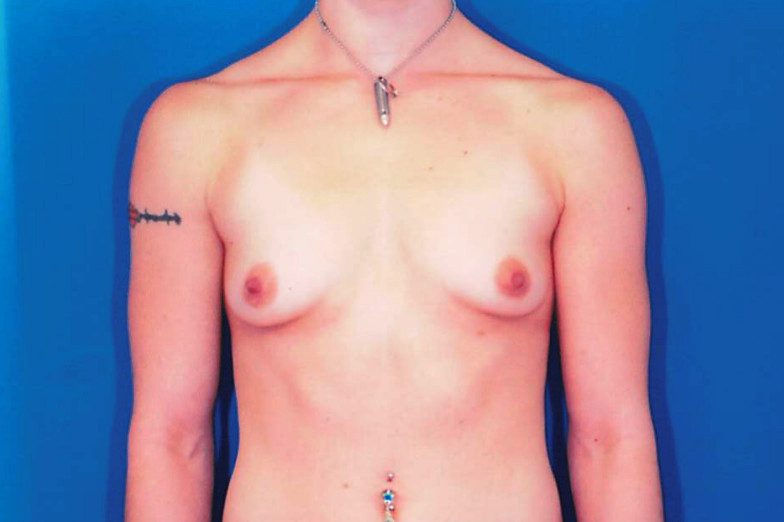
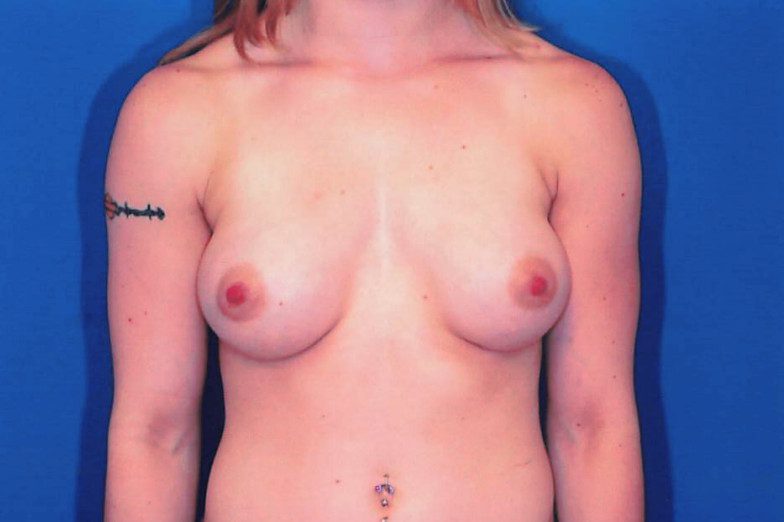
Sensitive Content
These before and after photos contain nudity. Please click/tap to view the images.
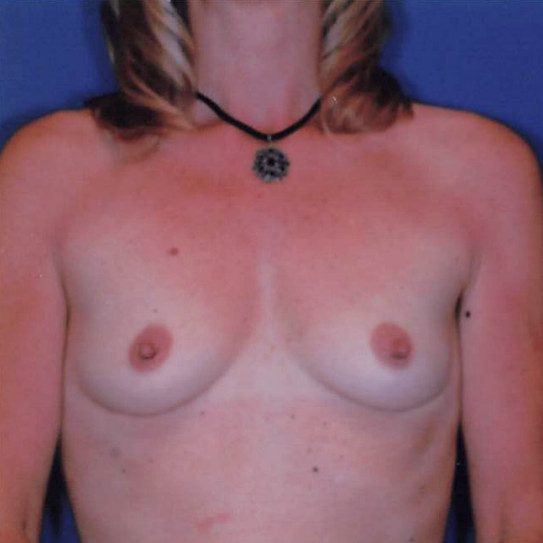
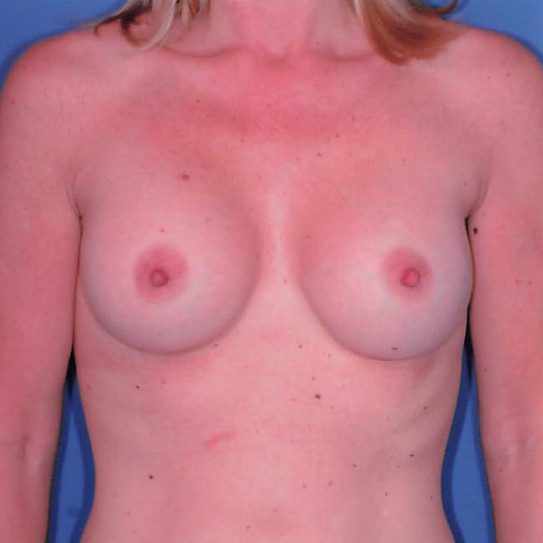
Sensitive Content
These before and after photos contain nudity. Please click/tap to view the images.

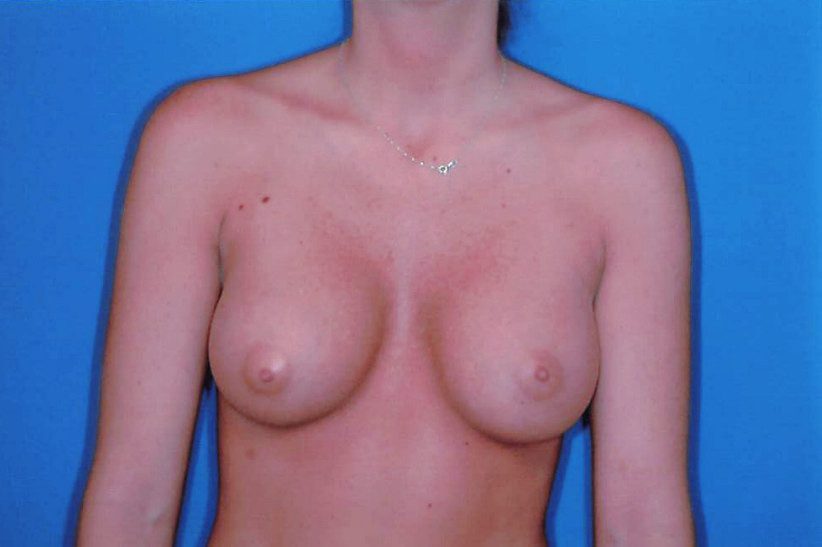
Sensitive Content
These before and after photos contain nudity. Please click/tap to view the images.
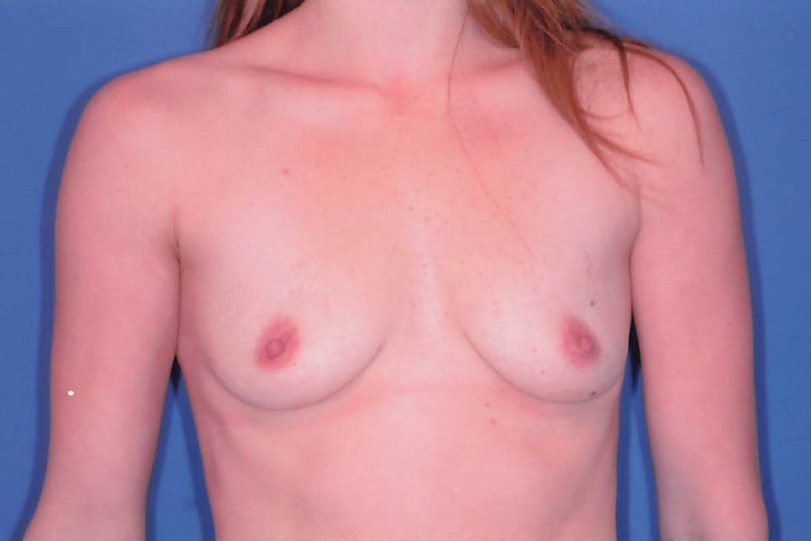
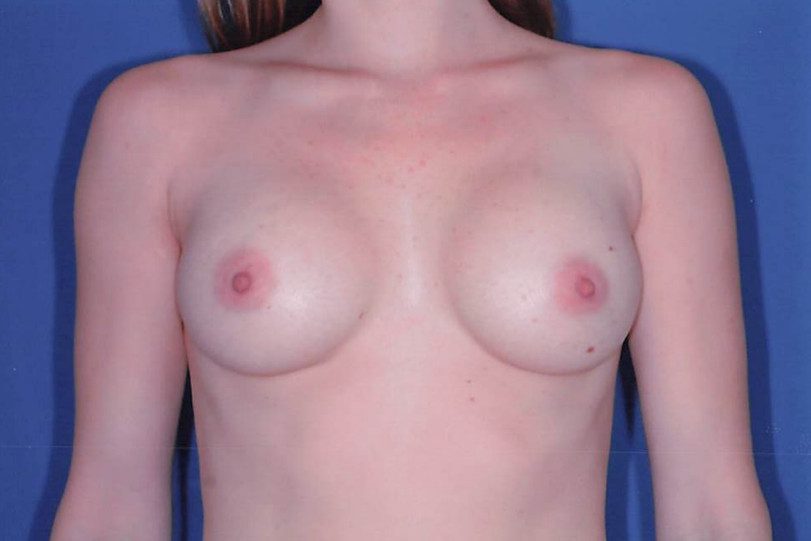
Sensitive Content
These before and after photos contain nudity. Please click/tap to view the images.
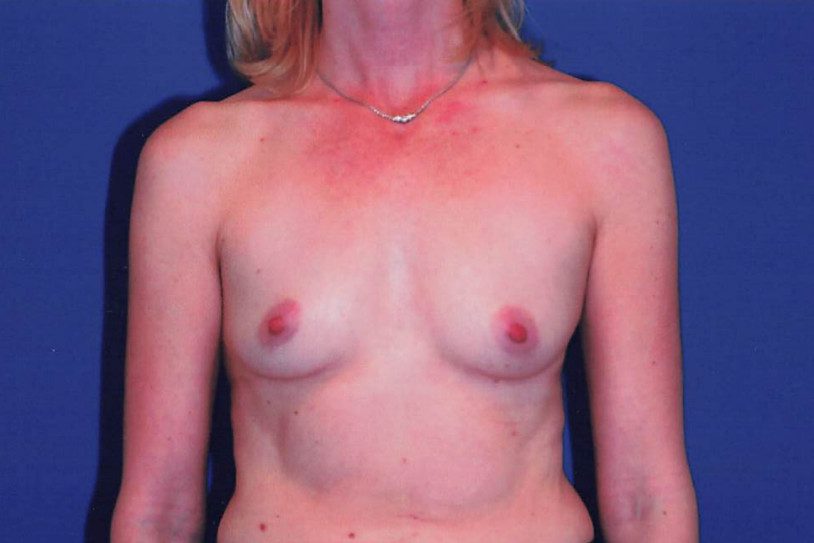
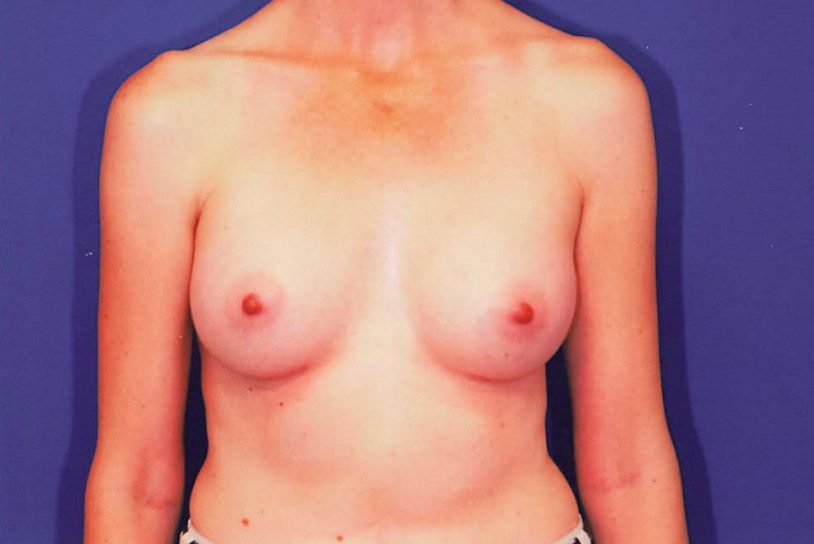
Sensitive Content
These before and after photos contain nudity. Please click/tap to view the images.
What to Look for in Breast Augmentation Photos
Nearly every surgeon who performs breast enhancement offers before and after patient photos on their website, and perhaps many more when you come into the office for a consultation. In the case of breast augmentation, it will be obvious that after surgery, the patient’s breasts are larger. But what differentiates an excellent result from a merely good one? Here are some things to look for when reviewing surgeons’ before and after photo galleries:
Natural Enhancement – While some women want a very obvious “boob job” look, this is certainly not the norm. Look at how the implants are placed on the chest – both the vertical positioning and the degree of cleavage – to determine how well the surgery complements the woman’s figure.
Scarring – This one can be tricky. For patients who have only a breast augmentation, in most cases the incisions will be hidden in the areola or beneath the breast crease, so you likely won’t see any incisions. If you are considering a breast augmentation with lift, incisions are often more noticeable. But even here, it depends how soon after surgery the “after” photos were taken. It’s not fair to compare a photo taken 3 months after surgery with one taken a year after surgery, since there will be more time for the scars to heal.
Lighting and Presentation – While these aspects of the photo don’t have a direct impact on the quality of the results, a surgeon committed to sharing high-quality photos understands the importance of showcasing great results, and that attitude and perspective likely influences everything they do to prepare for surgery and deliver highly pleasing results for patients.
Breast Implant Incision Options
There are three types of incisions that Dr. Kobienia can use to insert the breast implants, each made in a different area on or around the breasts.
Inframammary – The inframammary incision, commonly used during breast augmentation, is created in the crease under the breast, effectively hiding any scarring from readily-visible areas. The breast implants are inserted through the hidden incision into their appropriate position; inframammary incisions allow for submuscular (behind the chest muscle wall) and subglandular (between the mammary glands and pectoral muscle) placement.
Periareolar – The periareolar incision, which is also referred to as the nipple incision, is a popular technique used in the breast augmentation procedure. This type of incision is made in the area where the dark skin of the areola and the lighter skin of the breast meet, allowing the resulting scar to blend naturally. The location of the incision also allows for submuscular and subglandular placement, depending on what Dr. Kobienia believes is best for the patient.
Transaxillary – The transaxillary incision is made in the armpit and is used when the patient undergoing the breast augmentation wants no scarring on or around the breast. This incision is made away from the breast, leaving it virtually unseen. The breast implants are placed by creating a channel from the armpit to the breast and placing the implant through the opening. Placing an implant from an entry point that is far away from the breast can be difficult. While the transaxillary incision allows for submuscular and subglandular placement, the task of working from the armpit can cause difficulties and complications for both the surgeon and the patient.
Breast Augmentation Recovery
All women considering breast implants have some degree of concern about what the recovery will be like following a breast augmentation procedure. It’s only natural to wonder how this surgery will impact your daily routine while you heal. And you want to make sure you’re doing the right things so that you get your best possible breast augmentation results.
The good news is that with modern implant placement techniques, recovery can be quite quick and comfortable. Many of Dr. Kobienia’s patients are pleasantly surprised to find out that the majority of their recovery should be complete in days, not weeks. Here are some more specifics on what to expect.
There is usually mild pain following breast augmentation surgery, though it should subside within a couple of days with the pain medication prescribed by Dr. Kobienia. Each patient’s recovery time is different, but you should start feeling more like yourself within a few days. You’ll need someone to help out around the house for at least a couple days after surgery. After that, many patients feel comfortable doing many of their normal activities, but keep in mind that lifting, bending, and other laborious activities should generally be avoided for at least three weeks after the procedure.
Scarring is dependent on each individual patient; though most can expect to see improvement within several months, scars will continue to heal for a full year or more. Dr. Kobienia makes every effort to minimize scarring when planning incision placement.
Breast Augmentation FAQs
How much does breast augmentation cost?
Breast augmentation is an investment in your appearance that can help boost your self-confidence. When choosing a breast augmentation, the cost involved covers many different aspects of the procedure. This includes the surgery itself, hospital and operating room costs, anesthesia, pre-surgical tests, and any necessary prescriptions. These fees can vary based on the experience of the surgeon, the type of breast augmentation procedure and implants, and even your geographical location.
How do I find the best plastic surgeon near me for my breast augmentation?
When looking for a breast augmentation surgeon in your area, you want to look for a surgeon who frequently performs breast augmentations. Perhaps even more important, your surgeon should be board certified by the American Board of Plastic Surgery. When meeting with a surgeon, make sure all your questions are answered and pay attention to how comfortable you feel during the consultation. Ask to see before and after photos that feature similar body types to yours in order to get a clear idea of the results you can expect.
How do I know what breast size is right for me?
When choosing the right breast implant size, many different factors must be considered, including your overall body proportion, your goals, and the type of implant desired. Your surgeon will work with you to determine which implant size will work best and help you achieve your goals.
Will breast augmentation hurt?
During your breast augmentation procedure, you will be under anesthesia and should feel no pain or discomfort. After the anesthesia wears off, you can expect to feel some mild pain or discomfort during recovery, however, this can be managed through over-the-counter or prescription pain medications.
Are there any risks associated with breast augmentation?
Breast augmentation is considered a safe procedure; however, as with all surgeries, there is always the risk of potential side effects. You can experience complications with anesthesia, bleeding, or a complication or rupture with the implant. Your surgeon will go over your medical history during your consultation and do everything possible to reduce your risk for any potential complications.
How can I prepare for breast augmentation surgery?
Before your breast augmentation surgery, there are some things you can do to prepare for your recovery, as well as reduce your risk of potential healing complications and health concerns down the road. These can include:
- Schedule a mammogram – It is recommended to get a mammogram before your implants are placed in order to have a baseline of breast tissue.
- Stop Smoking – Smoking can affect your body’s ability to heal after any surgical procedure, so this is the perfect time to give the habit up.
- Talk with your surgeon about medications – Certain medications may affect your body’s ability to properly heal. Your surgeon may recommend stopping certain medications a few days before your procedure. This includes certain over-the-counter medications, such as ibuprofen.
- Plan for your recovery – take a day before your scheduled surgery and make sure you have everything you need for your recovery. Pick up any post-surgical prescriptions, set up a recovery area with your favorite books or things to keep you occupied, have the remote control nearby, and prepare some healthy meals that you can access easily when hungry. Talk with friends or family so you have people ready to help when needed.
What can I expect during recovery?
Breast augmentation recovery takes time, with full recovery taking four to six weeks. You can expect to feel soreness, tenderness, and breast sensitivity during this time. In most cases, you will be asked to wear a special compression garment in order to help the implants settle into position. During the first few days, you may feel increased pain and discomfort, but this is usually managed by over-the-counter or prescription pain medications. This pain should ease after the first week and be minimal by three to four weeks. After about a week, you can return to normal activities, however, you will want to avoid any strenuous activity until you are cleared by your surgeon.
Request a Consultation
Telephone No.612-930-1111

